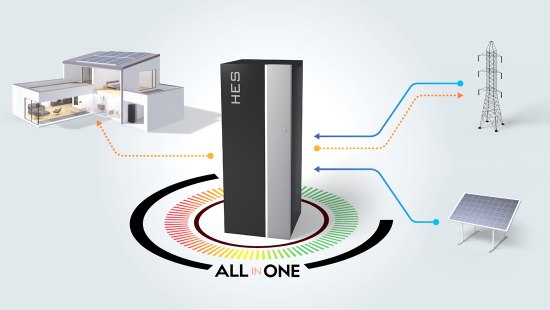Purchase of electricity at wholesale prices is now available also for households

To start – "Spot Market" or "Spot Prices" refer to trading where the commodity price changes dynamically, and the buyers can decide at what moment (at what price) they decide to buy or sell it. Typical examples are stock markets or virtual currencies. But electricity or gas are traded the same way, while spot prices of energies can also be described as wholesale prices because direct trading on such market has been unavailable to ordinary consumers. During the day prices are changing here depending on supply and demand. Energy production and consumption are largely predictable in a functioning economy, moreover, wholesale prices have been very stable over the last decades. This allowed distribution companies to offer fixed prices to the consumers and still make profit despite variable wholesale prices.
Energy crisis
However, from 2021 onwards the situation particularly in Europe started to change dramatically. "Green Deal", the EU ideological concept, together with economic downturn due to the Covid pandemic and war conflict in Ukraine caused uncontrolled price increases and absolute destabilisation of the energy market.
The situation, in the first step, led to collapse of smaller distribution companies that operated with lower margins and could not transfer the sharp increase in wholesale prices to consumers due to price fixing. Big distribution companies with significantly larger financial reserves and possible state subsidies could manage the situation better and maintained contracted prices until the end of the fixation period. The new prices, however, have already been, are or will be a multiple of original prices and, unfortunately, the situation will not improve in near future.
Spot prices for households?
Retail consumers, whether in the category of business or household, cannot generally purchase energy directly on the spot market. They must always use the services of a registered trader with a licence required for brokerage of energy sale. In the past the option of purchase at spot prices was not offered to retail customers and, due to price stability, there was no reason to offer it. But the energy crisis has changed the situation and new companies that offer intermediation of purchase at wholesale prices even to minor consumers, including households, have been established.
Households can now benefit from the spot prices too, whereas the only condition is that the consumption site is equipped with a four quadrant (4Q) electricity meter. It is an electricity meter that allows to independently measure energy consumption and supply in hourly intervals. Houses with installed photovoltaic power plants are equipped with this type of electricity meters as a standard. Customers apply for a change of supplier the same way as if they were switching, e.g. from INNOGY to ČEZ or EON. The customer only selects a supplier that offers a spot tariff and applies for the change. Reading of electricity consumption in order to be able to charge hourly prices are provided by the supplier.
Experience of other parts of Europe confirms that it is a trend of the energy market that will continue and even traditional distribution companies such as ČEZ a.s. include similar tariffs in their offers. However, the terms and conditions of such tariffs must be read carefully because not all of them provide spot trading even though their title includes the "Spot" term. So, what is the advantage of purchase at spot prices?
Fixed vs spot prices of electricity
Fixed prices provide customers with some certainty about the price they are going to pay for electricity in the following period. Nevertheless, distributors must set the fixed price so that they are able to purchase electricity for the customers throughout the contract period and as now the prices are very unstable and there is an assumption of their further growth, fixed prices are increased by a risk margin. Customers, therefore, must pay an extra for such "certainty".
Another option is to conclude a contract with the supplier for supply of electricity at spot prices. In practice it means that the distributor monitors how much electricity the customer consumed each hour and charges customer the price at which electricity was sold on the wholesale market at that time. The supplier charges certain commission for the service. It can be in the form of a fixed lump sum (e.g. bezDodavatele a.s. currently charges CZK 6 /day), or in the form of a surcharge to the price of electricity (e.g. ČEZ a.s. currently charges 0.40 CZK for one kWh supplied). As for the electricity prices, in such case, distributors bear no risks because they sell electricity at their purchase price. That is why fixed prices for entrepreneurs are currently not offered at all. They consumption is usually significantly higher than consumption of households and fixed price would have to be extremely high to cover the risks of further energy price growth.
Active trading on the spot market
Existing information imply that supplies at spot prices do not represent a significant benefit for consumers. When the wholesale price decreases, they pay less but when it increases, they pay more. But if consumers can adopt their consumption to the hourly price trend, spot purchase becomes a major opportunity. Especially if they can not only control the consumption of electricity from the network but also supply. In spot tariff, when supplying back to the network the consumer is paid for electricity the current wholesale price – that is why it is ideal to supply it back to the network when the price is the highest (see chapter FENIX energy concept).
Let us talk about the wholesale prices of electricity here. The prices are not created at random and unpredictably. Contrarily, they are established by balancing the hourly supply and demand and the hourly amount is determined by the most expensive energy sources that are used to balance the system. On one side there are the traders that have their customers, know the character of their consumption and they can, to some extent, estimate the amount of electricity required at given time the following day. The demand is sent to the state-established Energy Market Operator www.ote-cr.cz/en.
On the other side there are the power plants. They also know the usual course of electricity consumption. Since a standard power plant cannot be started within minutes, electricity production is planed ahead based on expected demand and the offer of how much energy, when and at what price can be supplied to the network is sent to the operator. The Energy Market Operator links the demands and offers and by c. 2 p.m. publishes the wholesale prices of energies, valid from midnight for the following 24 hours day ahead market.
Wholesale hourly prices are therefore publicly and in advance available not only to the trading entities but also to consumers. The information itself is not of significant value for consumers. Although the course (curve) of hourly prices is similar for subsequent days, the prices differ significantly from hour to hour. Therefore, any long-term time programming of consumption will not correspond to actual course of prices and daily programming of consumption according to the available pricelist is not realistic. If, however, consumers have a device that can load the wholesale pricelist from the Internet and is complemented with appropriate storage, the entire system gets a whole new extent. And this is exactly the very essential principle of the FENIX energy concept with HES battery storage as its focal point.
FENIX energy concept
The HES battery station is currently a totally unique equipment developed by AERS (member of the FENIX GROUP). With the dimensions of 0.6 x 0.6 x 1.9 m it includes not only a three-phase asymmetrical inverter with the power of 10 kW, MPPT control of house PVPP of up to 12 kWp and control unit but also battery storage with its capacity of up to 41 kWh. Considering the size of the station it is really above-standard. The "All in One" concept is not new, the stations are unique mainly thanks to the software that has been developed for them and thanks to the fact that, unlike most other stations on the market, they do not use commercial elements such as inverters, MPPT or chargers, but everything is developed in-house. This allows much more flexibility in the solution.
The pilot application of the FENIX concept is a family house in Omice that is equipped with the HES station. Here the control system not only reads wholesale prices of energies every day but based on the weather forecasts for given region, it also predicts the amount of electricity produced by the connected photovoltaic power plant the following day while taking consumption of the house into account. The information for PV production is updated continuously so the production prediction is being improved constantly even during the day. Based on these inputs and created algorithms, the control system decides when the station is going to be charged (the lowest wholesale prices), to what level the storage has to be charged and what capacity has to be left for PVPP (PVPP production prediction), when consumption from the network has to be limited and subsidised from the battery for regular operation of the house and when the maximum of accumulated energy from the battery has to be sold back to the network (highest wholesale prices). Operation parameters of the family house are then evaluated by an independent authority – the University Centre for Energy Efficient Buildings (UCEEB) CTU in Prague cooperates on the project.
Conclusion
As the pilot project of the family house in Omice shows, active trading on the spot market is not only available for households but it also leads to significant financial savings. Of course, the concept is applicable to the business sector too and thanks to possible VAT deduction it is even more interesting here. When selling electricity back to the network, solely prices excluding VAT are charged, but purchase of electricity is always burdened with VAT that the entrepreneurs, unlike households, can deduct.




